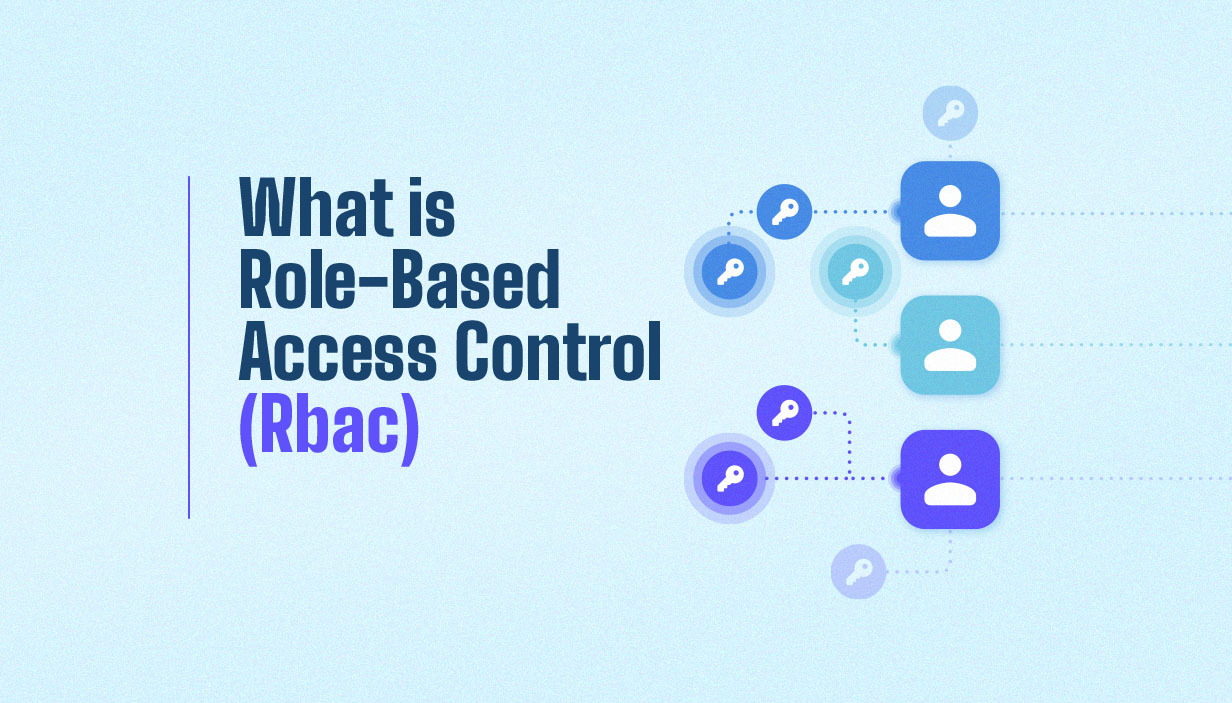Role-based access control, or RBAC, is a widely adopted security model for managing user access to systems, data, and applications. By assigning permissions based on a user’s role within an organization, RBAC helps ensure that each person only has access to the resources they need. This approach not only strengthens security but also streamlines administration and supports regulatory compliance.
Understanding RBAC: The Basics
RBAC is designed to simplify how organizations manage access to digital resources. Instead of granting permissions to individuals one by one, RBAC groups users by their user role such as administrator, developer, or end user, and assigns permissions to those roles. Each user role determines the specific user permissions that members of that role receive. When someone’s responsibilities change, updating access is as simple as changing their role assignment. If an end user’s job changes, their access must be updated accordingly to maintain proper security and access control.
How RBAC Works
In an RBAC system, administrators define a set of roles that reflect job functions within the organization. Each role is associated with specific permissions, like reading files, modifying records, or managing infrastructure. Users are then assigned to one or more roles, and can also be assigned to multiple groups for flexible access across different projects or departments. Administrators assign roles to users based on their responsibilities, ensuring that each user has the appropriate level of access.
This makes it much easier to manage access as teams grow or change. Administrators can adjust permissions at the role level to quickly reflect changes in responsibilities or organizational structure.
Key Components of RBAC
- Roles: Groups, also known as user roles, that represent job functions or responsibilities within an organization.
- Permissions: The specific actions or resources a role can access, also referred to as role permissions.
- User privileges: User privileges are determined by the permissions assigned to their user roles, ensuring systematic and secure access management.
- Users: Individuals assigned to one or more roles.
Types and Models of RBAC
The RBAC model serves as the foundation for various RBAC systems, each designed to manage access control by assigning role permissions in different ways. RBAC isn’t a one-size-fits-all approach. There are several models, each adding layers of sophistication:
Core RBAC
The foundational model where users are assigned user roles, and user roles are assigned permissions. This approach is straightforward and works well for most organizations.
Hierarchical RBAC
Roles can inherit permissions from other roles, reflecting organizational hierarchies. For example, a manager role may inherit all role permissions of a standard employee role, plus additional privileges.
Constrained RBAC
This model introduces constraints like separation of duties, ensuring that no single user can perform conflicting tasks (such as both requesting and approving expenses).
Constrained RBAC can enforce mutually exclusive roles, preventing users from being assigned to roles that would create conflicts of interest within the system.
How RBAC Differs from Other Access Control Models
Understanding how RBAC compares with other access control methods can help organizations choose the right approach.
Some models, such as Attribute-Based Access Control (ABAC), provide fine grained access control, allowing organizations to restrict access or deny access to resources based on detailed policies and user attributes, while RBAC focuses on controlling access through predefined roles.
RBAC vs Access Control Lists
Access control lists (ACLs) assign permissions directly to users or objects and define the permitted actions each user or object can perform. While flexible, this can become unwieldy in large environments. RBAC, by grouping permissions into roles, is easier to scale and manage. RBAC is particularly effective for managing business data access at scale.
RBAC vs Attribute-Based Access Control
Attribute-based access control (ABAC) grants permissions based on user attributes (like department or location) rather than roles. ABAC can restrict access to resources based on detailed user attributes, allowing for highly granular policies, but can be more complex to implement than RBAC.
RBAC vs Discretionary and Mandatory Access Control
Discretionary access control (DAC) lets resource owners grant access to others by assigning permissions, while mandatory access control (MAC) enforces access based on system-wide policies. RBAC sits between these models, offering both structure and flexibility.
RBAC System Architecture and Components
A robust role based access control (RBAC) system is built on a foundation of interconnected components that work together to manage user access and enforce security policies. At its core, the RBAC system defines roles based on job functions, ensuring that users are granted access only to the resources necessary for their responsibilities. Users can be assigned to multiple roles, and each role aggregates permissions that specify what actions can be performed on protected resources, such as applications, data, or infrastructure. The role hierarchy streamlines permission management by allowing roles to inherit permissions from other roles, reflecting the organizational structure and simplifying complex access scenarios.
Access control lists (ACLs) further refine which roles have access to specific resources and what actions are permitted. Role assignments and user assignments are central processes, linking users to roles and, by extension, to the permissions those roles provide. Permission authorization mechanisms ensure that only users with the appropriate role assignments can access sensitive resources, supporting compliance and data protection. By understanding and leveraging these components, organizations can implement a scalable and effective access control RBAC architecture that adapts to evolving business needs and security requirements.
Access Management in RBAC
Effective access management is at the heart of role based access control, ensuring that user access is both secure and aligned with organizational needs. Granting access is achieved by assigning users to roles that reflect their job functions, while limiting access ensures that sensitive data and resources are only available to those who truly require them. Managing user access involves ongoing reviews and updates to role assignments, adapting to changes in responsibilities or organizational structure. Access control lists (ACLs) and other control mechanisms help enforce the principle of least privilege, so users have only the permissions necessary to perform their duties. Temporary access can be granted for specific projects or tasks, with controls in place to revoke permissions when they are no longer needed. Role hierarchies simplify the management of complex access scenarios by allowing permissions to be inherited, reducing administrative overhead. By continuously monitoring and controlling access, organizations can detect and respond to potential threats, maintain compliance, and ensure that their access control RBAC system remains both efficient and secure.
Benefits of Role-Based Access Control
RBAC delivers a range of advantages for organizations of all sizes:
Improved Security and Data Protection
By limiting access to only what’s necessary for each role, RBAC helps protect sensitive data and reduces the risk of breaches. RBAC is also effective for managing network access and user permissions, further reducing security risks. This is especially important for organizations managing complex environments, such as those involved in cloud infrastructure management.
Operational Efficiency and Scalability
RBAC streamlines user provisioning and permission changes, making it easier to onboard new team members or adjust permissions as responsibilities evolve. This efficiency is crucial for teams focused on DevOps automation and rapid deployment cycles.
Simplified Compliance and Auditing
RBAC makes it easier to demonstrate compliance with regulations by providing clear records of access permissions, showing who has access to what. This is a key benefit for organizations prioritizing cloud compliance and data governance.
Common Use Cases and Examples of RBAC
RBAC is used across a variety of IT environments and industries. It is commonly implemented to manage access in diverse computing environments, ensuring secure and efficient control for both internal users and third-party users, as well as for entities such as virtual machines.
RBAC in IT Systems
Cloud providers, database platforms, and SaaS applications often rely on RBAC to manage access. Azure Resource Manager enables organizations to grant access to Azure resources at different scopes, such as management groups, subscriptions, and resource groups. For instance, a cloud infrastructure management platform might use RBAC to ensure that only authorized users can modify network settings or deploy resources.
RBAC in SaaS Applications
Modern SaaS solutions use RBAC to assign different privileges to administrators, power users, and end users, helping organizations maintain control as they scale.
Real-World Example Scenarios
- A finance team member is granted access to billing systems but not to development tools.
- Developers have permissions to deploy code but cannot access sensitive human resources data.
- Temporary project members are assigned roles that expire after the project ends.
Best Practices for Implementing RBAC
A successful RBAC implementation requires careful planning:
Defining Roles and Permissions Clearly
Start by mapping out all job functions and the minimum permissions required for each, then assign roles to users based on these functions. Avoid creating too many overly specific roles, as this can lead to unnecessary complexity.
Regular Audits and Role Reviews
Periodically review role assignments and permissions to ensure they still align with business needs and security requirements. This is particularly important during periods of growth or after major changes, such as a cloud migration.
Automation and Policy Management
Automating RBAC processes (such as role assignment and access reviews) can reduce errors and administrative overhead. Solutions that support automation can help organizations maintain consistent and secure access control as they scale.
Challenges and Limitations of RBAC
While RBAC offers many benefits, there are challenges to consider:
Implementing and maintaining RBAC can be complex, especially in large organizations with many users and roles. Defining roles and permissions requires careful planning to avoid excessive privilege or unnecessary restrictions. Additionally, as organizations grow and change, roles and permissions must be regularly reviewed and updated to remain effective.
Implementing RBAC across multiple operating systems can add further complexity to access management.
Role Explosion and Complexity
As organizations grow, the number of roles can multiply, making management more difficult. Regularly consolidating and reviewing roles helps prevent this issue.
Flexibility Issues
RBAC may not handle every unique access scenario, especially in dynamic environments where user needs change frequently. In some cases, combining RBAC with other models like ABAC can provide additional flexibility.
Role-based access control is a proven method for managing user access in today’s complex IT environments. By aligning permissions with job functions, RBAC helps organizations secure their data, streamline operations, and meet compliance requirements. Whether you’re improving your cloud cost optimization strategy, preparing for a cloud migration, or enhancing your DevOps automation pipeline, adopting RBAC is a smart step toward a more secure and efficient future.
Frequently Asked Questions about RBAC
What is role-based access control?
RBAC is a security model that assigns permissions to users based on their roles within an organization, streamlining access management and improving security.
What are the main benefits of RBAC?
Key benefits include stronger security, simplified administration, easier compliance, and improved operational efficiency.
How does RBAC work?
Administrators define roles, assign permissions to those roles, and then assign users to roles. Users inherit the permissions of their assigned roles.
What are the different types of RBAC models?
The main types of RBAC models are core RBAC, hierarchical RBAC, and constrained RBAC. Each rbac model provides a different approach to structuring roles and permissions, allowing organizations to choose the model that best fits their needs.
How is RBAC different from other access control models?
Unlike ACLs or ABAC, RBAC groups permissions by role, making management simpler and more scalable.
What are some common examples of RBAC in practice?
Examples include controlling developer access to cloud resources, managing permissions in SaaS apps, and segmenting access in database systems.
What are the challenges or limitations of RBAC?
Challenges include managing a large number of roles and handling unique or changing access needs.
How do you implement RBAC in an organization?
Start by analyzing job functions, defining roles and permissions, and using automation for assignment and audits. RBAC can also be implemented at the operating system level, where the operating system manages access permissions and enforces security policies for users and resources.
Can RBAC be combined with other access control methods?
Yes, RBAC is often combined with models like ABAC to enhance flexibility.
What is the principle of least privilege in RBAC?
It means users are given only the access they need to perform their job.
How does RBAC help with compliance and auditing?
RBAC provides clear records of access, making it easier to demonstrate compliance during audits.
What industries or organizations benefit most from RBAC?
Any organization that needs to manage access at scale including finance, healthcare, technology, and government, can benefit from RBAC.
Where did the RBAC model originate?
The foundational concepts of the RBAC model were introduced at the national computer security conference in 1992, marking a significant milestone in the development of access control and cybersecurity practices.


